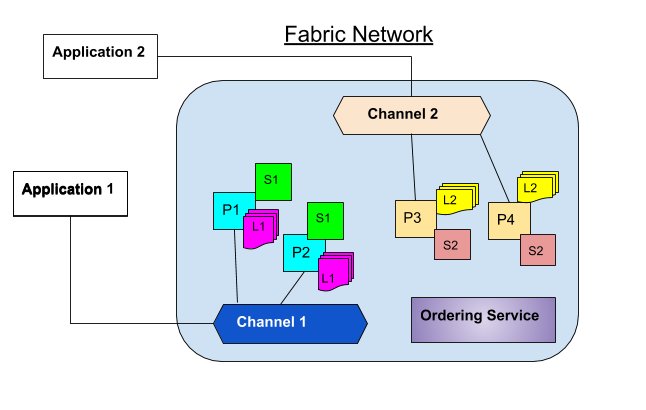In my article ” Hyperledger Fabric Architecture Part 1“, you have learned about the client applications, endorsing peers and committing peers as well as well as the ordering service. We have also discussed the transaction workflow and how consensus is reached. In this article, I shall explain
Channels
In permissionless blockchains like Bitcoin and Ethereum, all peers share and have access to the same ledger. However, this kind of blockchain may not be suitable for business applications. For example, a supplier may want to set different prices for different wholesalers, and he would not want everyone in the supply chain to view this information. In this scenario, he or she will prefer to deal with the different wholesalers separately. To solve this issue, Hyperledger Fabric came out with the novel concept of channels that allow private transactions within the same network.
Channels partition the Fabric network in such as way that only the stakeholders can view the transactions. In this way, organizations are able to utilize the same network while maintaining separation between multiple blockchains. The mechanism works by delegating transactions to different ledgers. Members of the particular channel can communicate and transact privately. Other members of the network cannot see the transactions on that channel. The concept is illustrated in the following diagram:

The diagram above shows two channels, channel 1 and channel 2. Each channel has its own application, peers, ledger and smart contract (
Application 1 will send transaction proposals to channel 1. P1 and P2 will then simulate and commit transactions to ledger L1 based on
Though our example shows peers belong to two distinct channels, in actual case peers can belong to multiple networks or channels. Peers that participate in multiple channels simulate and commit transactions to different ledgers. In addition, the same
Membership Service Provider (MSP)
Hyperledger Fabric is a
To verify an identity, we must employ a trusted authority. In Hyperledger Fabric, the trusted authority is the membership service provider (MSP). The membership service provider is a component that defines the rules in which identities are validated, authenticated, and allowed access to a network. The MSP manages user IDs and authenticates clients who want to join the network. This includes providing credentials for these clients to propose transactions, defining specific roles a member might play and defining access privileges in the context of a network and channel.
The MSP uses a Certificate Authority to authenticate or revokes user certificates upon confirmed identity. In Fabric, the default Certificate Authority interface used for the MSP is the Fabric-CA API. However, organizations can choose to implement an External Certificate Authority of their choice. Hyperledger Fabric supports many types of External Certificate Authority interfaces. As a result, a single Hyperledger Fabric network can be controlled by multiple MSPs.
The Authentication Process
In the authentication process, the Fabric-CA identifies the application, peer, endorser, and orderer identities, and verifies them. Next, a signature is generated through the use of a Signing Algorithm and a Signature Verification Algorithm. The Signing Algorithm utilizes the credentials of the entities associated with their respective identities and outputs an endorsement. The generated signature is a byte array that is bound to a specific identity.
In the following step, the Signature Verification Algorithm will accept the request(to join the network) if the signature byte array matches a valid signature for the inputted endorsement, or reject the request if not. If the user is accepted, he or she can see the transactions in the network and perform transactions with other actors in the network. On the other hand, if the user is rejected, he or she will not able to submit transactions to the network or view any previous transactions.
We shall explore chaincode in the next article.